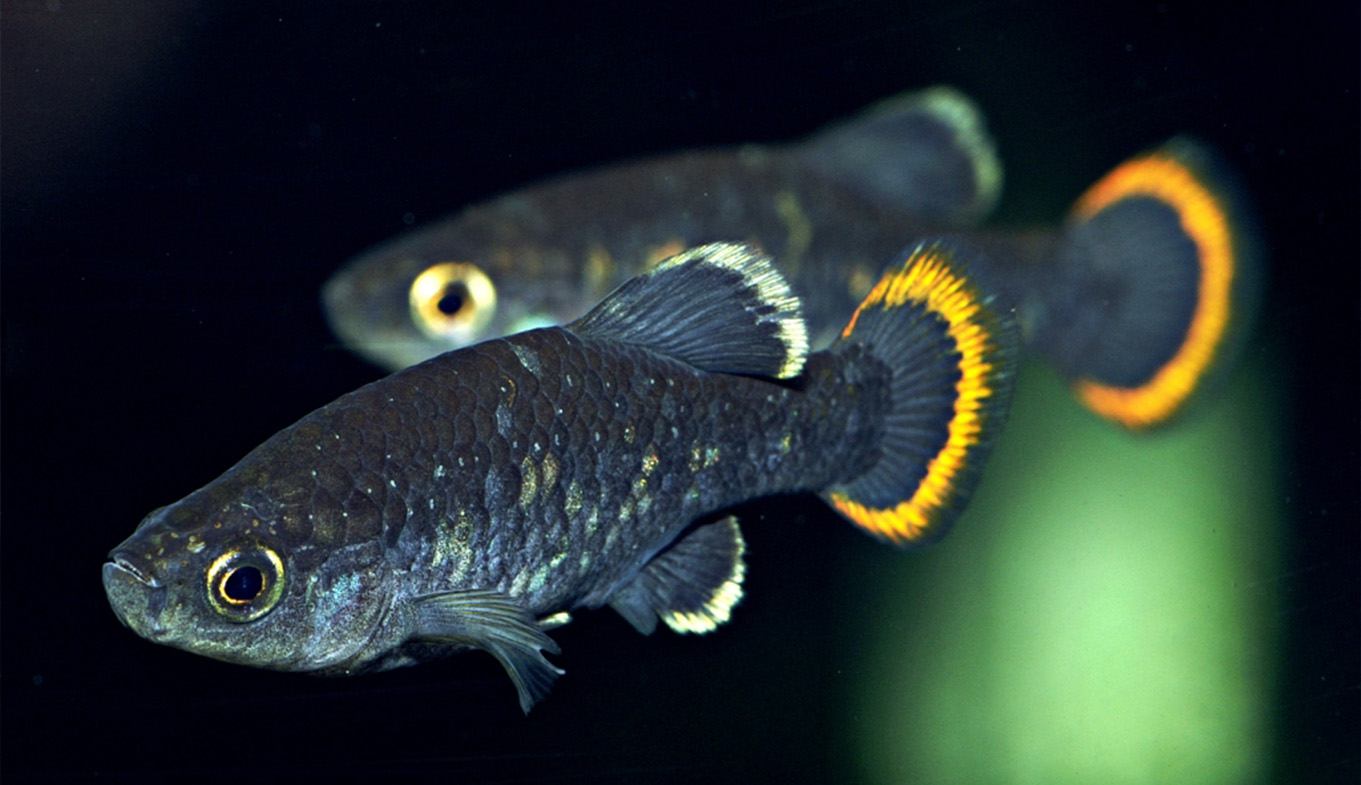The world’s rarest fish and where to find them
Perhaps the most amazing and fascinating aspect of our planet is the hidden parallel cosmos of life beneath the ocean floors. It can be tranquil and pure one moment, but then swiftly give way to tumultuous waves and chaotic storms, much like a many-headed hydra. It is thought that life originated in the oceans between 3.1 and 3.4 billion years ago. However, it was not until approximately 400 million years ago that it moved to land, demonstrating that our relationship with the water predates that with land. Over 71% of Earth's surface is made up of oceans, which are home to 99 percent of all life on the planet. Sea water makes up 97% of all the water on Earth. Less than 1 percent is fresh, while the remaining 2 to 3 percent is frozen in icecaps and glaciers. Humans have coexisted with the oceans throughout history and have taken advantage of them in numerous ways, yet we also harbor a deep fear of them. We are afraid of the powerful forces on the coast and at sea. Who gives the oceans' future a second thought? Who cares about their well-being? This article examines the threatened and critically endangered animals that have declined in number as a result of factors like overfishing, habitat degradation, and climate change.
Ornate Sleeper Ray
Scientific name: Electrolux addisoni
Location: off the Eastern Cape and KwaZulu-Natal coasts of South Africa
Estimated number: Unknown (only a handful have ever been seen)

Rays are a unique species of cartilaginous fish, and the Ornate Sleeping Ray is one of the most striking-looking rays out there, despite their unusual appearance. There are very few documented sightings and photographic records of the Ornate Sleeping Ray. Between 1984 and 2004 two type specimens were also obtained. The Ornate Sleeper Ray is the rarest fish in the world since it is seldom seen and none exist in captivity. When the Ornate Sleeper Ray was initially found and captured on camera in 1984, it was quickly realized that it was an unidentified species of ray. After then, there were a few additional reports of Ornate Sleeper Ray sightings, and in 2003, two specimens were eventually captured.
European Sea Sturgeon (Atlantic Sturgeon)
Scientific name: Acipenser sturio
Location: Garonne River, France
Estimated number: 20 – 750 adults in the wild

The European Sea Sturgeon, commonly known as the Atlantic Sturgeon, is a rare fish species found exclusively in France's Garonne River. Historically, the European Sea Sturgeon inhabited the North and Baltic Seas, the English Channel, the European Atlantic coastlines, the northern Mediterranean west of Rhodos, and the western and southern Black Seas. There have also been reports of European Sea Sturgeons discovered near Algeria, Morocco, and Tunisia. There are approximately between 20 to 750 mature European Sea Sturgeons left in the wild today. However, a few thousand fish have been released into the wild after being raised in captivity but have yet to reproduce.
Smalltooth Sawfish
Scientific name: Pristis pectinata
Location: Bahamas, Belize, Cuba, Honduras, USA and Sierra Leone
Estimated number: Global population unknown, 269–505 in the U.S

The Smalltooth Sawfish has a peculiar appearance and is named after its long, blade-like snout. Despite its appearance, the Smalltooth Sawfish is related to rays, which are cartilaginous fish. Historically, the Smalltooth Sawfish was more prevalent in tropical and subtropical portions of the western and eastern Atlantic Oceans. Today, the Smalltooth Sawfish can only be found off the coast of Florida and near many Bahamas islands. The IUCN Red List states that the Smalltooth Sawfish is most certainly extinct in many of its previously known habitats. Since 1962, it is estimated that more than 95 percent of the Smalltooth Sawfish population has been wiped out.
Kissing Loach
Scientific name: Parabotia curtus
Location: Kameoka City and Okayama City, Japan
Estimated number: Less than 800

The Kissing Loach, or Aymodoki in Japanese, can only be found in three small, isolated places of Japan. The Kissing Loach is still alive today thanks to significant human intervention and conservation efforts. According to the IUCN Red List, the Kissing Loach is on the verge of becoming extinct in the wild, but is now listed as a critically endangered species. The IUCN Red List also predicts that if conservation efforts were to end, all remaining Kissing Loach populations would perish. It is estimated that there are fewer than 800 Kissing Loaches remaining. The majority of Kissing Loaches are found in Kameoka City, where a conservation area is intended to be built in a park. Every year, volunteers in Okayama City make sure that the two populations of kissing loaches in the region reproduce.
Giant Sea Bass Scientific name: Stereolepis gigas Location: Eastern Pacific, Mexico, Northern half of the Gulf of California Estimated number: roughly 500 Giant Sea Bass were previously abundant off the coasts of California and Baja, Mexico, but have been nearly wiped off in recent decades due to overfishing. The Giant Sea Bass is expected to recover because to robust conservation efforts. However, the present wild population is estimated to be around 500 mature individuals. As the name says, the Giant Sea Bass is a large fish that may grow to almost 272.16 kg in size. Giant sea bass are the greatest carnivores in Southern California's kelp forests. Giant Sea Bass used to be considerably more abundant, but they were easy to catch since they tend to assemble in large groups.
Tequila Splitfin
Scientific name: Zoogoneticus tequila
Location: Rio Ameca drainage in Mexico
Estimated number: Less than 500

The Tequila Splitfin is a tiny fish that lives in a small spring pool in Rio Teuchitlan, Mexico. Scientists assumed the Tequila Splitfin had become extinct after collecting no specimens since 1992. The only known remnant population of Tequila Splitfins was discovered in 2005. The remnant population of Tequila Splitfins is estimated to be around 500, with around 50 adult fish. Fortunately, conservation initiatives are underway to help replenish the wild population of Tequila Splitfins. In 2017, environmentalists released over 700 Tequila Splitfins back into the wild, hoping that the species would recover.
Adriatic Sturgeon
Scientific name: Acipenser naccari
Location: Adriatic Sea
Estimated number: Less than 250

Historically, the Adriatic Sturgeon was more widespread and numerous in the Adriatic Sea. However, overfishing over the last few decades has destroyed the wild population of Adriatic Sturgeon, and there may be fewer than 250 remaining. According to the IUCN Red List, the Adriatic Sturgeon has already become extinct in many of its former habitats. Since 1988, the Adriatic Sturgeon has been successfully maintained on fish farms, and the species is regularly supplied in Italy. Unfortunately, there is no evidence that the released fish reproduce in the wild. For the previous 15 years, there has been no record of the Adriatic Sturgeon spawning in its typical habitat.
Devils Hole Pupfish
Scientific name: Cyprinodon diabolis
Location: Devils Hole, Ash Meadows, Death Valley National Park, Nevada, USA
Estimated number: Roughly 187

Although this list and our study suggest otherwise, the Devils Hole Pupfish is usually regarded as the world's rarest fish. The Devils Hole Pupfish may only be found in the Devils Hole, a geological structure within Death Valley National Park in Nevada. It is thought that the Devils Hole Pupfish has been isolated in this area for 10,000 to 20,000 years. Overall, the Devil's Hole Pupfish population has always been tiny. Researchers believe that the abundance of algae on the Devils Hole rock shelf has an impact on their numbers. In October 2018, scientists counted approximately 187 Devils Hole Pupfish, the highest number seen in 15 years.
Red Handfish
Scientific name: Thymichthys politus
Location: Coastal waters off eastern Tasmania
Estimated number: 40-80

The Red Handfish is an unusual-looking fish with hand-like fins that it uses to navigate over the ocean floor. Since its discovery in the 1800s, the Red Handfish has maintained a tiny population size. Until early 2018, only one group of 20 to 40 Red Handfish was known to live in Hobart's Frederick Henry Bay, off the coast of eastern Tasmania. In early 2018, researchers from the University of Tasmania's Institute of Marine and Antarctic Studies identified a second group of Red Handfish. This latest discovery increases the estimated population of Red Handfish to around 80 individuals. Red Handfish are critically endangered and their numbers are low because their eggs, which they lay on the bottom of seaweed, are frequently mistakenly disturbed when people or other marine creatures brush against the seaweed.
Stargazer Fish
Scientific name: Uranoscopidae
Location: New Zealand, Australia, Atlantic coast of Europe and Africa and the Black Sea
Estimated number: Unknown

Renowned for being among the most unattractive fish in the world, stargazers are highly specialised, poisonous ambush predators. They can burrow themselves quickly under the sand, just showing their mouth and upside-down eyes. They are great ambush predators just on the basis of this, but they also have outstanding camouflage, blending in well with the sandy substrate they are buried in. The Stargazer Fish is endangered due to habitat destruction as a result of its hunting strategy. The main techniques for destroying habitat are fishing non-target fish, bycatch of skates, and bottom trawling.





















